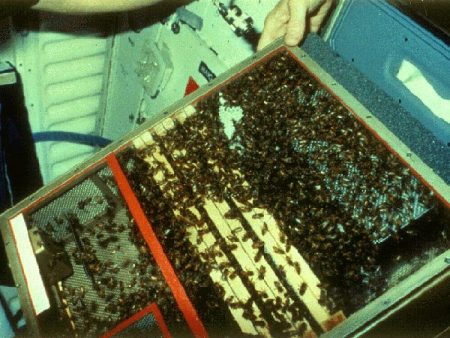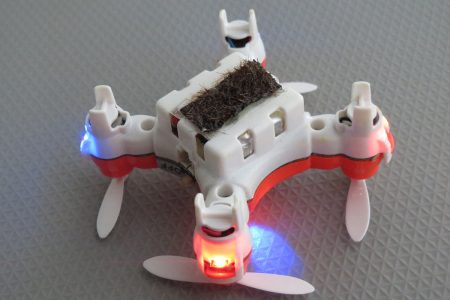February 13, 2017 – Here on Earth we rely on pollinators to ensure that the vegetables, fruits and staple crops we plant reproduce. Among the most prolific pollinators are bees. So when we get to Mars are we planning to bring bees with us? Because if we don’t then we will have to develop a new generation of self-pollinating plants, or plants that reproduce asexually.
Can we substitute robots for bees? On Earth where bee colony collapse is an enormous problem, scientists are also searching for a bee substitute. One of them may have just come up with a solution, a small drone coated with a conductive gel that can fly from plant to plant and do what bees do best. His name is Eijiro Miyako, a chemist at Japan’s National Institute of Advanced Industrial Science and Technology.

As a chemist Miyako had developed a sticky gel a number of years ago. Described as “an experiment gone wrong” Miyako put the gel aside. Ten years later Miyako, while cleaning the lab, found the gel on a shelf. It was in pristine condition. He connected the gel with challenges farmers were facing with bee colony collapse and climate change and came up with an invention, a tiny $100 U.S. drone, a mere 4 centimeters (approximately 1.5 inches wide), and weighing 15 grams (about one-half ounce), with the bottom covered by horsehair containing the gel. The soft and flexible animal hair covered in gel proved to be an ideal substitute for the sticky fine body hair found on bees and other pollinators. Flight experiments demonstrated the drones ability to cross-pollinate a Japanese Lilly.
Does the idea of drone pollinators make sense here on Earth. Not likely considering the size of orchards and farms. Duplicating the more than 1.3 trillion bees on the planet using substitute drones makes little sense. The size of the drone and cost would have to be dramatically reduced. And if reduced in both dimension and cost, even then it would make more sense to save natural pollinators than to try and find robotic substitutes.
The International Space Station has conducted animal experiments on board but not, so far with honeybees and pollination. During the shuttle program NASA did bring honey bees on board to see if they could survive.The agency continues to study bee pollination capabilities in low-pressure chambers here on Earth.
But keeping bees viable on a journey to Mars, and maintaining them when the first humans arrive there may prove far too difficult. That’s where Miyako’s experiment and its successors could prove to be suitable pollinator replacements.











